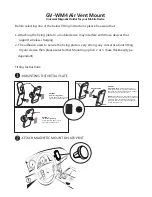
This manual can be modified without any warning
4
Due to the detecting units feature of being able to rotate on all axes, it is also possible to
place the sensor on a slanting wall upwards without using further clamps, however
detection from lower beams should be lost. Reducing the mounting height can
compensate for this loss.
For a sure and repeatable detection, it is suggested to install the sensor in order to have
the intruder that moves accross the beams and not toward the sensor.
The more interesting feature of this infrared sensor is to have two different and completely
independent detection heads that can be orientated separately. This allows the infrared
sensor to function in “OR/AND” mode. If turned to “OR”, when one of the two sensors
detect a movement, an alarm is triggered. When turned on “AND” mode
,
only detection by
both sensors will create an alarm signal. Furthermore it is possible to select the priority of
the head that triggers the alarm. This means higher security and less risk of “unwanted
alarms”. The optical range is 8m per ray.
Sensor use:
Mount the sensor taking account of a max coverage area of 8 m in distance and a max.
angle of 100° (see fig. 1).
Fix the bottom of the sensor with the 4 fisher screws included (Ø6mm – screw 3,5x35mm
– see points
in figure).
Insert the extension for the Tamper protection (see
in figure).
Drill the sensor case in the point
and pass through the hole the signalling wires to be
connected to the wireless transmitter.
Put the wireless transmitter in the empty case behind the sensor and fix the sensor with
the 3 included screws (2,9x19mm – see points
)
To set the sensitivity of the detectors, start from a minimum setting condition i.e.
regulation trimmers turned in an anticlockwise direction
and
detectors placed at the
lowest possible position.
Increase gradually the range of detection only in the area you
want to protect, in order to avoid the risk of detecting insignificant movements and
unnecessary alarms.
AFTER POWERING THE SENSOR, IT IS ACTIVATED AND STABILIZED ONLY 20
SECONDS AFTER THE END OF FLASHING RED LED’S.
D
C
B
A



























